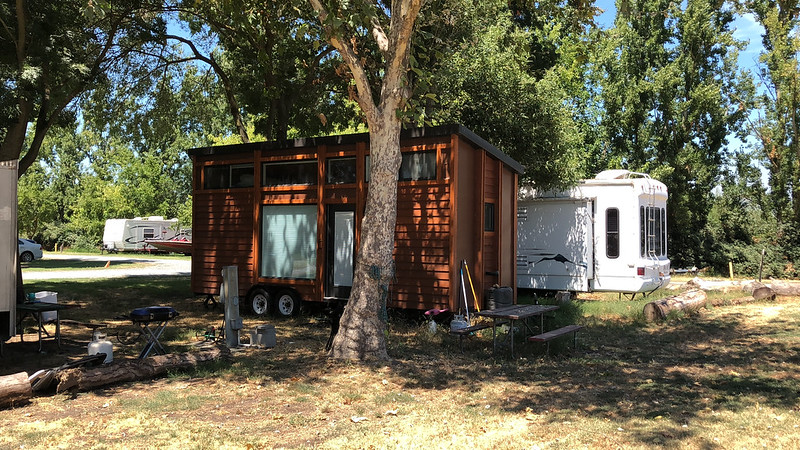Hey there, fabulous 60-somethings (or soon-to-be)! You’ve been crushing adulthood for decades—juggling careers, families, maybe even pets named after your favorite rock stars. Now that retirement’s peeking over the horizon (or you’ve already popped the cork), it’s time to get strategic with those dollars and cents. Think of this as your financial “Greatest Hits” album, full of clever moves to keep you living large, stress-free, and maybe even a little extra adventurous. So grab your morning coffee (or evening glass of wine) and dive into these 17 smart money moves every 60-something should have on their radar.
1. Rebalance Your Retirement Portfolio

Your investment mix probably looks like the financial equivalent of a fantasy football lineup—exciting but maybe a little unbalanced. Now that you’re in your 60s, it’s time to dial down the risk and tweak those allocations so you’re not sweating every market hiccup. By shifting some of your stocks into bonds or conservative funds, you’re giving your portfolio a stability boost. In fact, Investopedia found that regular rebalancing helps investors lock in gains and manage downside risk effectively. Setting a schedule—say, every six or twelve months—keeps you on track without turning it into a stressful chore. Think of it as applying sunscreen before a day at the beach: you’ll thank yourself later.
Start by examining your target asset allocation and comparing it to your current holdings. If your stock percentage has ballooned because of a bull run, sell a slice and reallocate to underweight areas like bonds or cash equivalents. This forces you to “buy low, sell high” automatically, which even the pros struggle to do consistently. You can handle this DIY style or lean on robo-advisors that trigger auto-rebalancing based on your set parameters. Either way, you’re reducing the chance of a portfolio nosedive messing up your retirement income plan. Plus, having a clear, written policy removes the temptation to panic sell during market dips. In your 60s, stress over finances is exactly the tension you want to avoid.
2. Max Out Catch-Up Contributions

The IRS knows you’ve been juggling a lot, so they let anyone 50 and older stash extra cash in retirement accounts. That means you can throw an extra $7,500 into your 401(k) or $1,000 more into your traditional or Roth IRA this year, per Schwab. These “catch-up contributions” are like a VIP pass to turbocharge your nest egg without paying taxes now. Imagine boosting your retirement savings by thousands simply because you waited a bit longer. Automating these extra deposits feels like magic—the money goes in before you even see it. Future you will be fist-pumping when those additional contributions turn into extra retirement income.
If you haven’t been maxing out your retirement accounts, now is the time to play catch-up. Even a few thousand dollars of additional pre-tax savings compounds into a significantly larger balance over the next decade. Talk to HR about adjusting your payroll deductions or set up recurring transfers from your checking account. If you’re self-employed, make sure your solo 401(k) or SEP IRA also benefits from catch-up limits. It’s a hassle-free way to close the gap on earlier years of under-saving. And the best part? You’ll sleep better knowing you’ve given your future self a little extra cushion.
3. Strategize Your Social Security Claim

When it comes to Social Security, timing is everything—claim too early and you lock in smaller checks, wait too long and you might miss out if you need the cash. You can start as early as 62, but that shrinks your monthly payout forever. On the flip side, delaying past your full retirement age bumps benefits by roughly 8% per year up to age 70. The Social Security Administration lays out these trade-offs in detail, so you can weigh immediate needs against long-term gains. It’s a bit like choosing between fries now or a supersize later. Crunching the numbers with the SSA’s calculators or a planner helps you find the sweet spot.
Health, life expectancy, and spousal benefits all factor into the ideal claiming age. If you’re in great shape and have a family history of longevity, delaying might pay dividends—literally. But if you need income sooner for expenses or care, starting earlier could ease monthly cash flow. Some couples stagger their claims to maximize household benefits, like a strategic tag-team. Just make sure you know how survivor benefits work to protect the spouse who outlives the other. A little planning here can turn Social Security from a guessing game into a solid part of your retirement income.
4. Boost Your Health Savings Account (HSA)

HSAs are the unsung heroes of retirement healthcare planning, offering a triple tax advantage you won’t find anywhere else. You stash in pre-tax dollars, watch it grow tax-free, and withdraw tax-free for qualified medical expenses. For 2024, those 55 and older can add up to $4,750 for a family plan or $3,950 for an individual plan. According to Fidelity Investments, savvy retirees treat HSAs like an extra Roth IRA they can’t touch until medical bills crop up. It’s like having a secret health fund that also doubles as an investment account. If you haven’t maxed it out yet, you’re leaving free money on the table.
Even after Medicare enrollment, you can’t contribute but your existing balance can keep growing. The trick is investing HSA dollars in low-cost funds and letting compounding work its magic. When retirement hits and those dental or vision bills pop up, you’ll be able to tap tax-free cash. Some folks even use HSAs to cover long-term care premiums or qualified nursing home stays. Just keep good records of your medical receipts to avoid unexpected taxes. With healthcare costs rising, your HSA could be the financial lifesaver you didn’t know you needed.
5. Get Your Estate Plan in Tip-Top Shape

Wills and trusts may not be the life of the party, but they’re vital for making sure your hard-earned assets go where you want. Forgotten beneficiary designations or outdated documents can land your heirs in probate court faster than you can say “trust fund.” AARP reminds us that every major life event—marriage, divorce, new grandbaby—should trigger a review of your estate plan. You don’t need a law degree to start; many online platforms guide you through a will or basic trust setup. But complex estates often benefit from an attorney’s expertise to minimize taxes and legal headaches. Think of an updated plan as gift-wrapping your legacy in clear, legally binding instructions.
Powers of attorney and healthcare directives are equally important for times when you can’t speak for yourself. These documents appoint someone you trust to make financial and medical decisions on your behalf. Without them, courts appoint guardians—often a slower, costlier process. Schedule annual check-ins to confirm that your designated agent is still the right choice. And keep copies in a safe, accessible place—digital vaults work wonders. With your estate plan in tip-top shape, you’ll enjoy your retirement knowing your wishes are locked down.
6. Pay Off High-Interest Debt

Credit card balances and personal loans with high interest rates can silently drain your monthly budget like tiny money leeches. If you’re carrying balances north of 8% APR, you’re basically paying a hefty tax for borrowing each month. Tackling high-interest debt in your 60s frees up cash flow and saves you hundreds or even thousands in interest payments. You could use the snowball method—paying off smallest balances first—or the avalanche method that targets the highest APRs. Balance-transfer offers with 0% introductory rates can be a powerful tool, just watch out for transfer fees and the rate hike at the end of the promo. Think of it as a strategic mission to liberate your hard-earned money from the grip of lenders.
Many retirees find that paying down debt provides a psychological boost as much as a financial one—you’ll literally feel lighter. Before raiding your retirement nest egg, compare the guaranteed “return” of debt elimination versus the growth rate of your investments. Paying off a 15% APR credit card effectively nets you a risk-free 15% return—no stocks, no volatility. Set up automatic payments that at least cover the minimum, then direct any extra cash toward the highest-rate balance. If you have home equity, a low-rate HELOC or cash-out refinance might consolidate debt at a cheaper rate, though it comes with its own risks. Just be sure you’re not trading unsecured debt for a lien on your home unless you have a solid repayment plan. Done right, ditching high-interest debt in your 60s lets you stride into retirement with real freedom.
7. Diversify Your Income Streams

Relying on Social Security or a single pension can feel like walking a financial tightrope without a safety net. Building multiple income streams—such as rental properties, dividend portfolios, or freelance side gigs—adds stability and flexibility. Those modest monthly checks from a rental home or stock dividends can cover essentials or treat yourself to little luxuries. Freelance consulting based on your career expertise can keep your skills sharp and your wallet happy. Even launching an online course about a hobby or specialty can generate passive income over time. Diversification isn’t just for portfolios; it’s a retirement income power move.
Peer-to-peer lending or crowdfunding real estate platforms offer another way to earn returns without the landlord headaches. If you go down that road, research each platform’s track record and fee structure to avoid nasty surprises. Dividend investing requires patience—you’re looking for stable, rising payouts rather than sky-high yields that could be unsustainable. When it comes to rentals, partner with a property manager if you’d rather sip piña coladas than fix leaky faucets yourself. And if you’re unsure where to start, setting aside a small trial budget can help you learn the ropes riskably. By diversifying your income, you transform retirement from a one-note performance into a symphony of cash flows. Plus, keeping busy with these ventures can add purpose and social connections to your golden years.
8. Plan for Long-Term Care Costs

About 70% of people turning 65 will need some form of long-term care, yet most retirees aren’t financially prepared for the hefty bills. Whether it’s home health aides, assisted living, or nursing homes, care costs can skyrocket—think five figures per year or more. Ignoring this potential expense is like skipping out on car insurance just because you hope not to crash. Private long-term care insurance policies can help cover these costs, but premiums rise as you age, so don’t wait too long. Hybrid life insurance/LTC policies offer both a death benefit and long-term care coverage, blending protection and flexibility. And veterans or spouses of veterans might be eligible for Aid & Attendance benefits that supplement other income.
If insurance isn’t your style, set up a dedicated “care fund” separate from your emergency savings to cover potential needs. Some retirees choose self-insuring by earmarking part of their portfolio for future care expenses. Another option: look into Medicaid-compliant annuities that shield assets while still qualifying you for benefits. Consult a financial advisor or eldercare planner to model various worst-case scenarios. Having a plan in place not only safeguards your finances but also spares family members from making last-minute funding decisions under stress. In retirement, peace of mind sometimes comes down to knowing you can handle life’s toughest chapters.
9. Review Your Life and Health Insurance Coverage

Your insurance needs shift in your 60s, so dust off those policies and make sure you’re not under- or over-insured. Term life policies you took out decades ago may no longer align with your goals or dependents. If your kids are self-sufficient and you’re mainly concerned about funeral costs, consider a small final expense policy. Meanwhile, standard Medicare often leaves gaps in dental, vision, and hearing coverage that can hurt your wallet. A Medicare Advantage plan or Medigap supplement could bridge those holes and save you money on out-of-pocket expenses. Even pet insurance is worth revisiting if you have four-legged friends whose vet bills are climbing.
Group insurance plans through alumni associations or professional groups sometimes offer rates you can’t find on the open market. During open enrollment, compare deductibles, premiums, and provider networks carefully—cheaper isn’t always better. Life insurance underwriting can tighten as you age, so lock in any term conversions before rates spike. If you haven’t reviewed your umbrella liability policy, now’s the time to ensure major assets like your home are protected. Even a small claim can become a big headache without proper coverage. Regular insurance check-ins make sure you’re safeguarded without overspending on premiums.
10. Schedule an Annual Financial Check-Up

Once a year, take a seat with your financial statements spread out in front of you—think of it as a spa day for your money. Review your budgets, investment performance, debts, and upcoming expenses to spot any red flags or opportunities. Updating your beneficiary forms should be part of this checklist, since outdated designations can foil your plans. If your goals have shifted—like downsizing or traveling abroad—your withdrawal strategy may need tweaking too. And don’t forget to account for seasonal expenses or anticipated care costs. Small adjustments now can save you headaches down the road.
You can DIY this audit or book a session with a fee-only advisor to get a fresh perspective. Technology can help—a spreadsheet, budgeting app, or robo-advisor dashboard makes data clearer. Make a habit of setting reminders so this check-up doesn’t slip off your radar. Small adjustments, like reallocating a chunk of bonds or bumping up savings, can make a big difference over time. Think of it as fine-tuning an engine: a little maintenance keeps everything running smoothly. In the long run, these annual reviews are key to a worry-free retirement ride.
11. Create a Bucket Strategy for Withdrawals

The bucket approach to withdrawals divides your assets into short-, medium-, and long-term “buckets,” each serving a different purpose. The first bucket holds cash or cash equivalents for your spending in the next 1–3 years, so you don’t have to sell investments in a downturn. The second bucket, filled with intermediate bonds or conservative funds, covers years 4–10, giving your portfolio time to recover if markets dip. The final bucket, stocked with growth-oriented assets like stocks, fuels income beyond year 10. This strategy smooths out your cash flow and reduces sequence-of-returns risk during early retirement. By knowing exactly where your next paycheck is coming from, you can sleep easier.
To get started, calculate your annual spending needs and allocate accordingly across buckets. Refill the first bucket each year by replenishing it from your intermediate assets. This annual shuffle keeps the system humming, like restocking pantry items after a big grocery run. You can DIY with spreadsheets or enlist a financial planner to model your buckets. Remember, the exact time horizon for each bucket is flexible—adjust based on your risk tolerance and market outlook. For many retirees, the bucket strategy turns the chaos of withdrawals into a calm, organized plan.
12. Downsize or Right-Size Your Home

Once the kids have flown the coop, you might look around your house and think, “Why am I heating all this empty space?” Downsizing can free up home equity, cut maintenance costs, and reduce property taxes if you move to a lower-tax area. Right-sizing doesn’t always mean tiny living; you could trade a sprawling yard for a cozy condo with great amenities. If you’ve built substantial equity, selling can provide a lump sum to invest or spend on bucket-list adventures. Moving closer to grandkids, friends, or favorite pastimes adds quality-of-life value you can’t measure with dollars alone. And less square footage means less cleaning—don’t underestimate that joy.
Before you list, factor in selling costs, moving expenses, and potential capital gains taxes. A 1031 exchange or primary residence exclusion might reduce your tax bill if you buy another property. If a full sale isn’t appealing, consider a reverse mortgage to tap equity while staying put. Senior communities often bundle services like lawn care and security into HOA fees, simplifying your life. Take your time touring options—rushing a move can lead to buyer’s remorse. When you right-size your home, you’re not just cutting costs; you’re designing a lifestyle that fits your next chapter.
13. Leverage Tax-Efficient Withdrawal Strategies

Tax-efficient withdrawals can shave thousands off your tax bill and stretch your savings further in retirement. A common rule of thumb is to tap Roth IRAs first, since withdrawals there are tax-free. Then dive into taxable brokerage accounts, which may have favorable capital gains rates. Lastly, pull from traditional IRAs or 401(k)s, where distributions are taxed as ordinary income. This order helps minimize your adjusted gross income and avoid pushing yourself into higher tax brackets. Plus, it can reduce or eliminate required minimum distributions (RMDs) down the road.
If you expect your income to spike one year—say, because of a house sale or bonus—plan Roth conversions during lower-income seasons. Splitting conversions over multiple years smooths out your tax liability. You can also harvest capital losses in taxable accounts to offset gains, a strategy known as tax-loss harvesting. Municipal bonds or bond funds may add tax-free interest income if you live in a state with high taxes. Combining these tactics can make April 15 feel like a victory lap rather than a stress test. Smart tax moves mean more mimosas money each spring.
14. Consider a Reverse Mortgage—or Not

Reverse mortgages can sound scary, but for some retirees they’re a lifeline—letting you tap home equity without monthly mortgage payments. You receive funds as a lump sum, line of credit, or monthly payments, and the loan only becomes due when you move out or pass away. No monthly payments can boost cash flow, but be prepared for origination fees, mortgage insurance, and interest that adds up. If you’re house-rich but cash-poor, turning part of your equity into usable dollars might bridge budget gaps. However, it reduces the inheritance you leave behind unless you plan carefully. And you still must pay property taxes, insurance, and maintenance costs.
Before signing on the dotted line, work with a HUD-approved counselor to understand all the fees and repayment terms. Compare reverse mortgages to home equity lines of credit or downsizing options to see which suits you best. Some hybrid life insurance or annuity products can mimic reverse mortgage benefits without risking your home. Make sure your heirs are on board and know how the loan will affect their inheritance plans. Having a clear exit strategy—like a timeframe to sell or repay—is essential to avoid surprises. Done right, a reverse mortgage can be a smart tool in your retirement toolbox rather than a last resort.
15. Automate Your Bill Payments and Savings

In your 60s, forgetting a bill or misplacing a payment can trigger annoying fees and credit score dings you don’t need. Automating bill payments on fixed expenses—mortgages, utilities, insurance—ensures you’re never late. At the same time, automate transfers to savings, HSAs, and investment accounts to “pay yourself first.” This dual autopilot system handles your adulting chores while you focus on living your best life. Setting it up takes just a few minutes online but pays dividends in stress reduction all year. Plus, you can still review statements each month to double-check for errors or rate hikes.
For variable expenses, set up alerts to notify you when a payment processes or exceeds a threshold. Many banks let you schedule recurring transfers for gifts or charitable donations too. If your bank doesn’t support certain payments, consider a bill-pay service that centralizes everything in one dashboard. Reviewing these automated flows during your annual financial check-up ensures nothing unexpected lurks in the shadows. Ultimately, automation is the unsung hero of a hands-off, worry-free retirement lifestyle. It’s like having a personal assistant who never takes a vacation.
16. Keep Learning—Financially and Personally

Retirement doesn’t mean your brain goes on snooze—it’s a golden opportunity to pick up new skills and stay mentally sharp. Online courses in finance, art, language, or technology can broaden your horizons and maybe even boost your income. Joining an investment club or local meetup keeps your social calendar active while you learn the latest market trends. Podcasts and audiobooks let you soak up knowledge during walks, commutes, or while gardening. Lifelong learning not only fuels your curiosity, but research shows it can reduce cognitive decline risk. Plus, bragging about your latest MOOC certificate feels pretty good at family gatherings.
Many community colleges offer discounted or free classes for seniors, so check out their catalogs. Libraries often host seminars on everything from estate planning to digital photography. If you’ve always wanted to learn coding or design, resources like Codecademy or Skillshare make it accessible. Group classes provide accountability, which helps you stick with new habits. And don’t underestimate the power of teaching others—mentoring youth or peers reinforces your own expertise. Staying curious keeps retirement vibrant, purposeful, and full of “aha!” moments.
17. Plan for Legacy Beyond Money

Your legacy isn’t just dollars and cents—it’s the stories, values, and experiences you pass on. Charitable giving, whether through donations or volunteering, can amplify your impact long after you’re gone. Funding a scholarship in your grandchild’s name or setting up a donor-advised fund lets you see your philanthropy in action. Mentorship programs allow you to share hard-won wisdom with younger generations, leaving a human imprint. You might even create a time capsule or write letters to loved ones to be opened on future milestones. Legacy planning brings purpose to your final chapter just as much as financial considerations.
If you have artistic talents or family recipes, compile them into a cookbook or video series that will outlive you. Oral history interviews capture personal anecdotes that fill in gaps no document ever could. Setting up a charitable trust or foundation creates a lasting vehicle for causes you care about. Talk with your family about non-financial wishes—memorial music, donation preferences, or ritual ideas. Discussing these topics now reduces stress later and ensures your vision is honored. Building a legacy beyond money means weaving your values into the world in indelible ways.
This article is for informational purposes only and should not be construed as financial advice. Consult a financial professional before making investment or other financial decisions. The author and publisher make no warranties of any kind.








